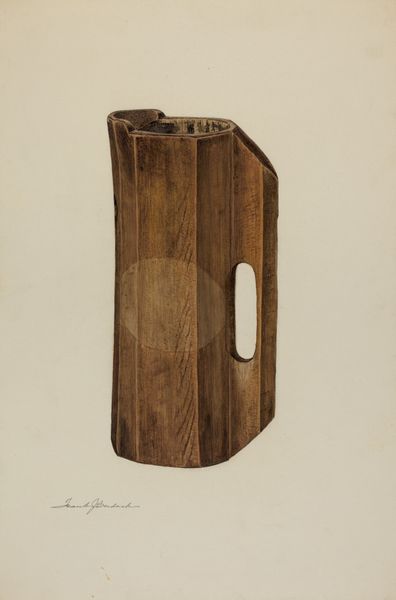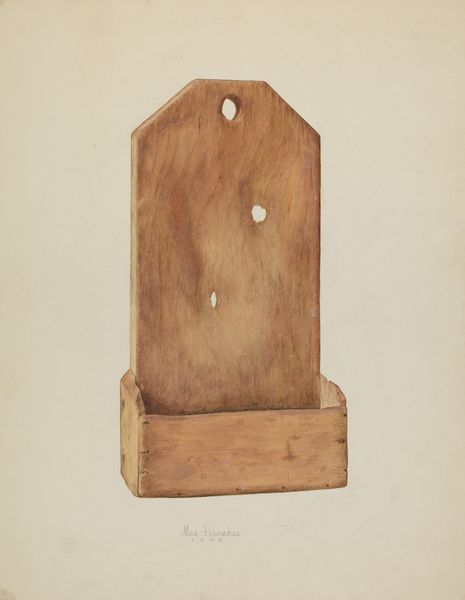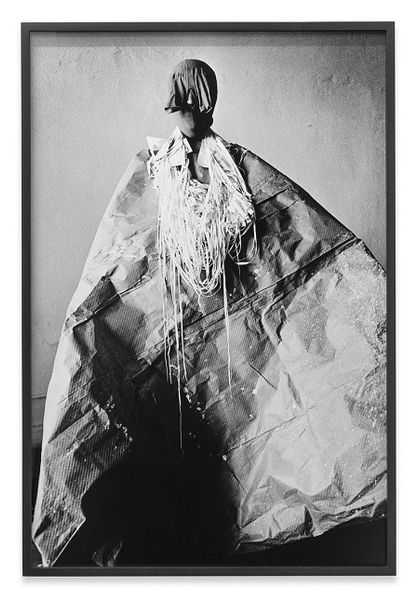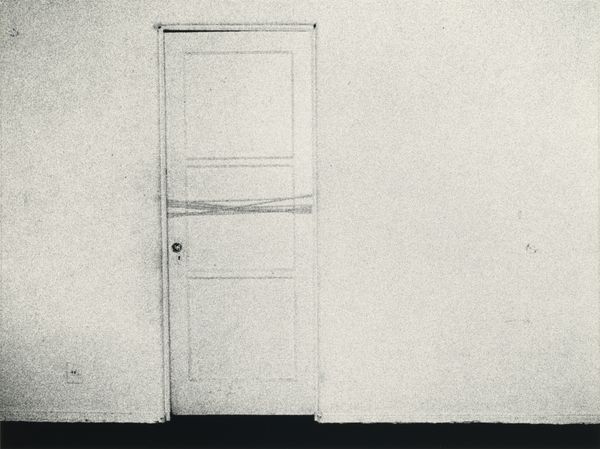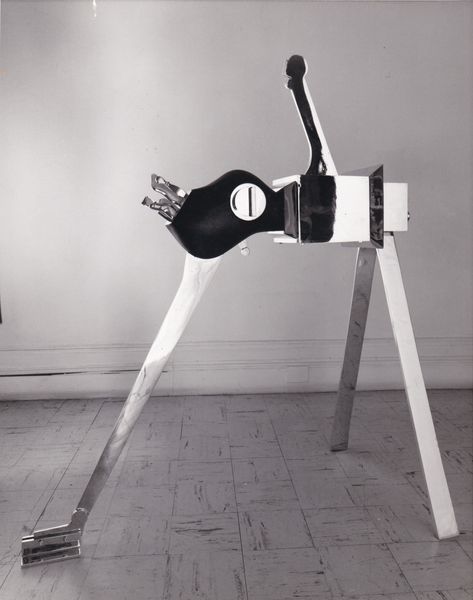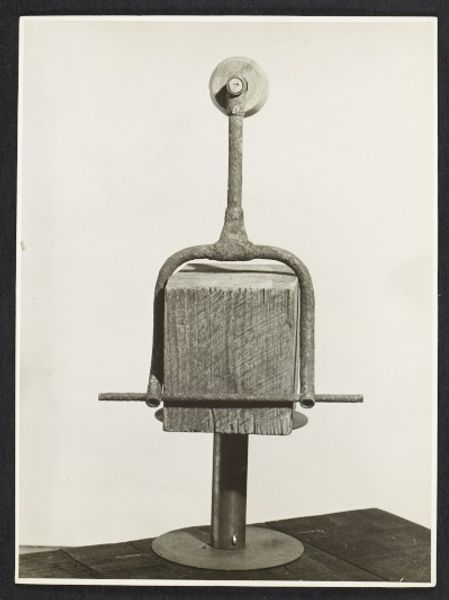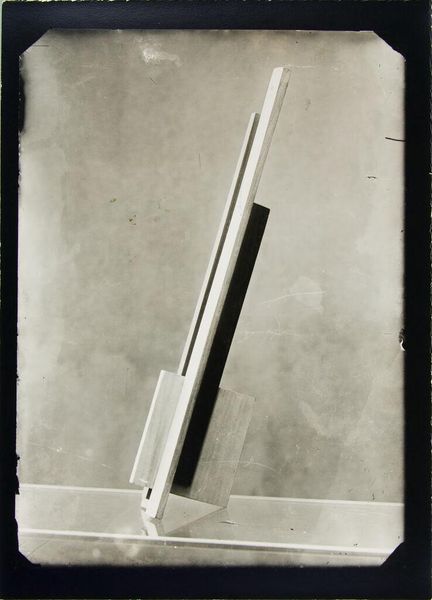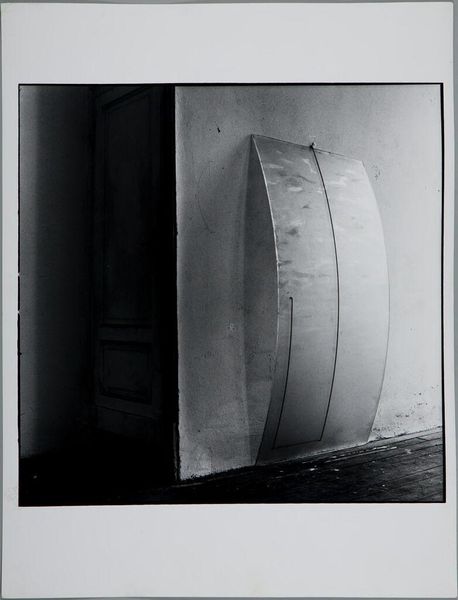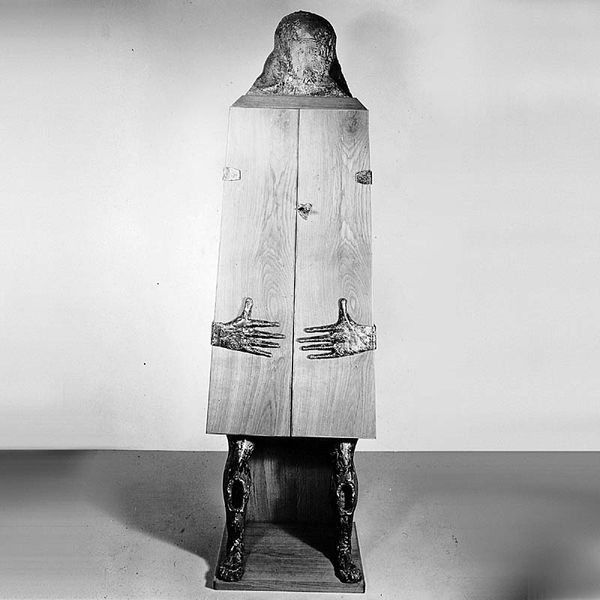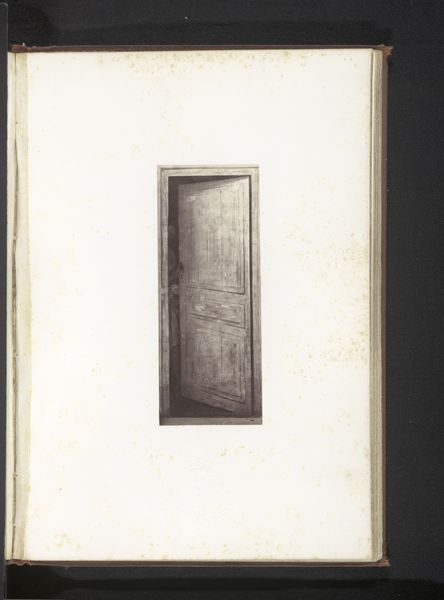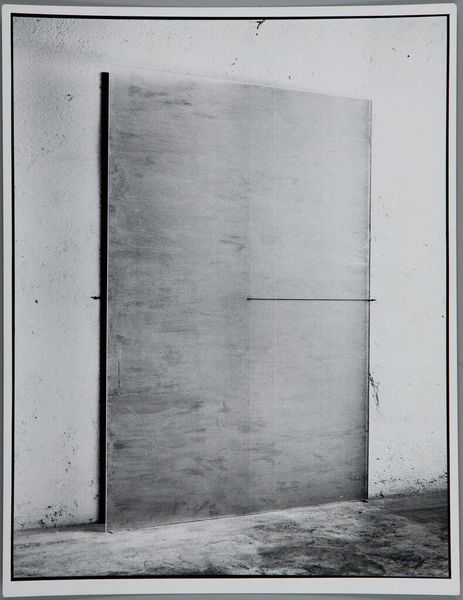
mixed-media, performance, photography, sculpture
#
portrait
#
mixed-media
#
performance
#
conceptual-art
#
sculpture
#
appropriation
#
figuration
#
photography
#
sculpture
Dimensions: image: 11 x 10.9 cm (4 5/16 x 4 5/16 in.) sheet: 25.3 x 20.2 cm (10 x 7 15/16 in.)
Copyright: National Gallery of Art: CC0 1.0
Curator: Here we have Ann Hamilton's piece, "body object series #12, door," possibly created between 1984 and 1993. It’s a mixed-media work, combining photography and sculpture, even hinting at performance. What’s your first take? Editor: It's…unsettling, right? Like a very polite monster. There's a stillness that feels almost staged, but with a wink of absurdity, and darkness to it. I'm strangely drawn in. Curator: It's fascinating how Hamilton uses everyday objects to question the human body's relationship with its surroundings. This image speaks to how materials shape identity and experience. Look at the door itself – its construction, the worn handle, signs of use and production over time... Editor: Yes, it's less about hiding behind a door, and more like the door *is* the body now. I wonder about the choice of such an ordinary, well, pedestrian door. You can practically smell the varnish and dust of someone's old hallway in here! There's so much more meaning conveyed in the selection of material, versus, say, if she chose metal. Curator: Absolutely. The door as a mass-produced object also represents boundaries and thresholds, both physically and metaphorically. Think about who has access and who is denied entry, what spaces are considered private versus public, and then how all these can define a culture or class. Hamilton challenges notions of the body as purely biological. It is material! Editor: Which brings us back to the hands, these pale hands – they appear almost helpless holding this heavy portal. Is the door protecting, or imprisoning? It’s heavy to consider, not just literally as something weighty, but also philosophically weighty, too. Curator: Precisely. And through this seemingly simple intervention – the juxtaposition of a human figure with this constructed object – Hamilton pushes us to examine our relationships with designed environments and everyday commodities that, through their industrial production, reflect and shape human experience. Editor: Yeah, it all leaves me contemplating all the invisible labor etched into this… door-being, if you will, that goes into everything. Curator: It's a powerful reflection, truly making you think about the way material shapes our lives. Editor: Indeed, I leave wanting to know more of Hamilton's process in choosing these very human but ghostly accessories.
Comments
No comments
Be the first to comment and join the conversation on the ultimate creative platform.
